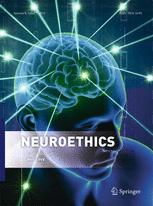 Abraham Romney (Humanities) Published “Rhetoric from the Margins: Juan Francisco Manzano’s Autobiografía de un esclavo” in the Journal Rhetoric Society Quarterly.
Abraham Romney (Humanities) Published “Rhetoric from the Margins: Juan Francisco Manzano’s Autobiografía de un esclavo” in the Journal Rhetoric Society Quarterly.
(This article originally appeared in Tech Today.)
 Abraham Romney (Humanities) Published “Rhetoric from the Margins: Juan Francisco Manzano’s Autobiografía de un esclavo” in the Journal Rhetoric Society Quarterly.
Abraham Romney (Humanities) Published “Rhetoric from the Margins: Juan Francisco Manzano’s Autobiografía de un esclavo” in the Journal Rhetoric Society Quarterly.
(This article originally appeared in Tech Today.)
Michigan Tech Employee Service Recognition Event
On Wednesday, May 6th, 2015, faculty and staff members, along with their guests, gathered at the Memorial Union Ballroom for an awards dinner recognizing 25, 30, 35, and 40 years of service to Michigan Tech.
Among the employees recognized were Victoria Bergvall and Craig Waddell for 25 years of service.
Michigan Tech students Tanya Juarez and Stephanie Hubble recently appeared on a pod cast on the Website Remarkable Chatter.
The students, who appeared at the C-L-K Schools, talked on the podcast about women in STEM fields and how teachers can incorporate more STEM into their classrooms.
Michigan Tech University Students Talk Women In STEM (STEM Everyday 23)
Chris Woods visits with a couple of students from Michigan Tech University from the Women’s Leadership Council. The MTU students presented to the 11th and 12th grade girls of the Public Schools of CLK about STEM. Tanya Juarez, chemical engineering student and Stephanie Hubble, science and technical communication student from Michigan Tech University tries to spread the word that women do belong in STEM careers.
Read more and listen to audio at Remarkable Chatter, by Chris Woods. The podcast is 7 minutes 34 seconds.
The Department of Humanities will host two professional training sessions financed and co-sponsored by the French Embassy in Washington, DC. The purpose of these workshops is to provide practical training in curriculum and teacher preparation for French for Science and Technology classes and French for the Medical Professions.
These training sessions will also certify universities offering the Professional French Language Diploma–Science and Technology and the Professional French Language Diploma–Healthcare.
An instructor from the Paris International Chamber of Commerce, Alexandra Crendal, will teach the training sessions (May 18-22 for French for Science and Technology classes; May 25-29 for French for the Medical Professions) for a total of 42 faculty members from throughout the United States, structured as follows:

The Vice President for Research Office has announced the Research Excellence Fund Awards. Among the grantees is the Humanities Department’s Dr. Marika Seigel, Associate Professor of Rhetoric and Technical Communication, who was awarded a Scholarship and Creativity grant.
See this article for the full list of awards.
 L. Syd M Johnson (HU) has co-edited a special issue of the journal Neuroethics (April 2015) on “Concussion and mTBI” (co-edited by Frederic Gilbert, University of Tasmania, and Brad Partridge, University of Queensland).
L. Syd M Johnson (HU) has co-edited a special issue of the journal Neuroethics (April 2015) on “Concussion and mTBI” (co-edited by Frederic Gilbert, University of Tasmania, and Brad Partridge, University of Queensland).
On April 11-13, a team of nine Michigan Tech students participated in the Environmental Protection Agency’s Sustainable Design Expo as a part of the P3 program for People, Prosperity and Planet in Washington DC. The team won the AIChE Youth Council on Sustainable Science and Technology P3 Award. This award was given to one of 40 teams by the American Institute of Chemical Engineers’ Institute for Sustainability and SustainUS, a nonprofit organization of young people advancing sustainable development and youth empowerment in the United States. The award recognizes the team that has the most interdisciplinary and community engaged project that will have a significant impact on reducing resource use locally, regionally, nationally or globally and that can benefit youth.
The team also earned an Honorable Mention P3 Award from the EPA.
The team includes the following students and was mentored by Jay Meldrum (director of the Keweenaw Research Center) and Richelle Winkler (assistant professor in social sciences):
(This article originally appeared in Tech Today. Writer: Allison Mills)
The Modern Language program in the humanities will be screening the 3rd and last movie of its film series this year on the theme Alternate Realities. The German Doctor will screen tomorrow at 7 p.m. in Walker 134, after a brief introduction. The event is open to the whole campus and the community. The film has English subtitles. Popcorn will be served as well.